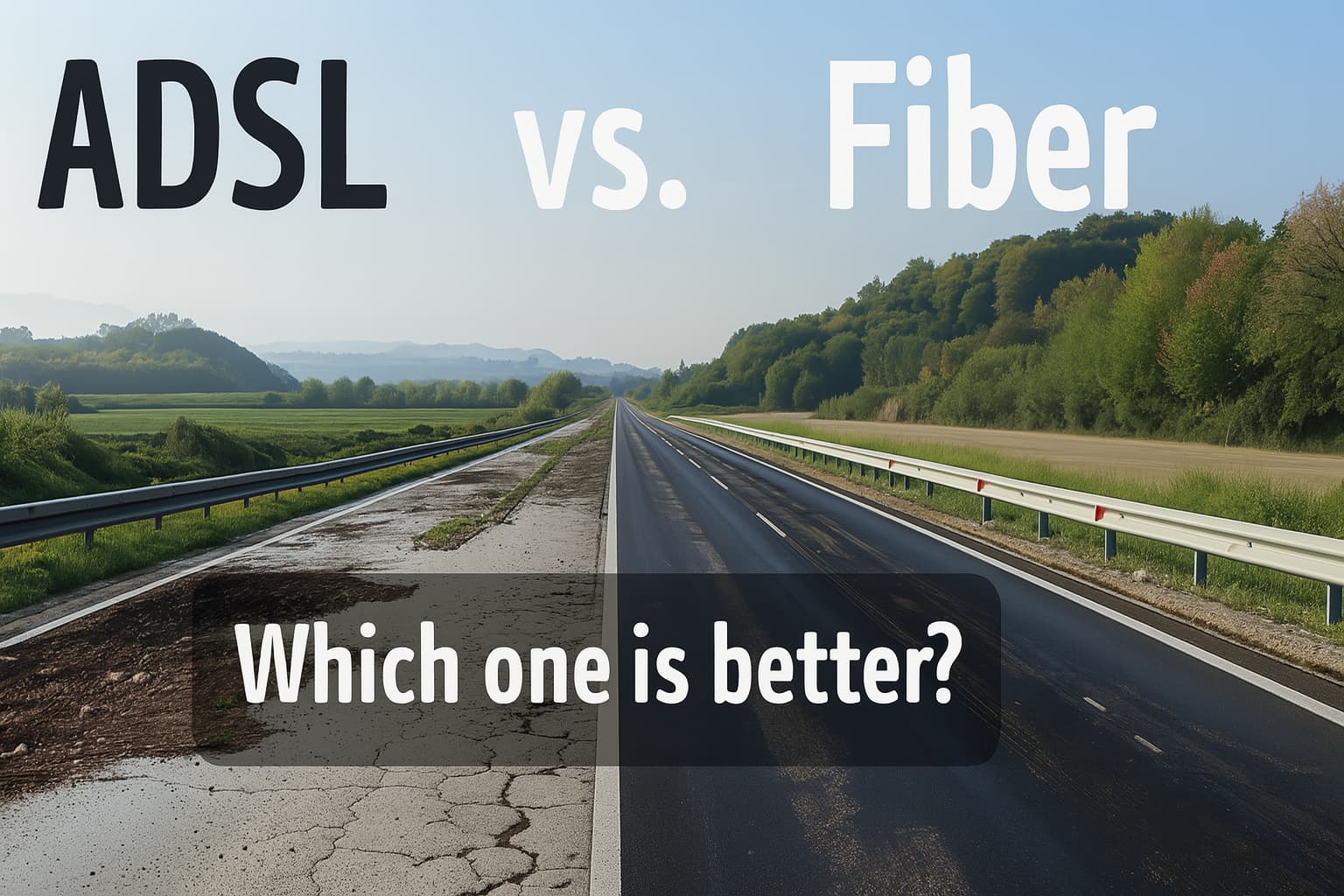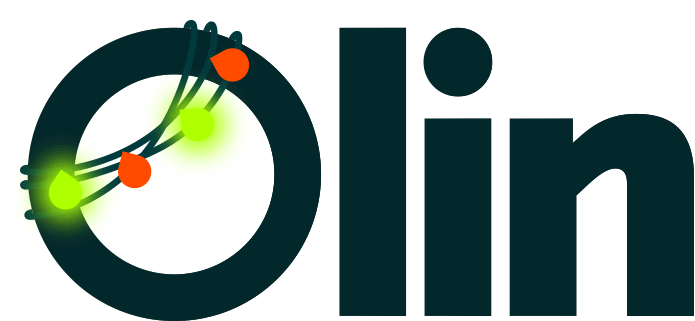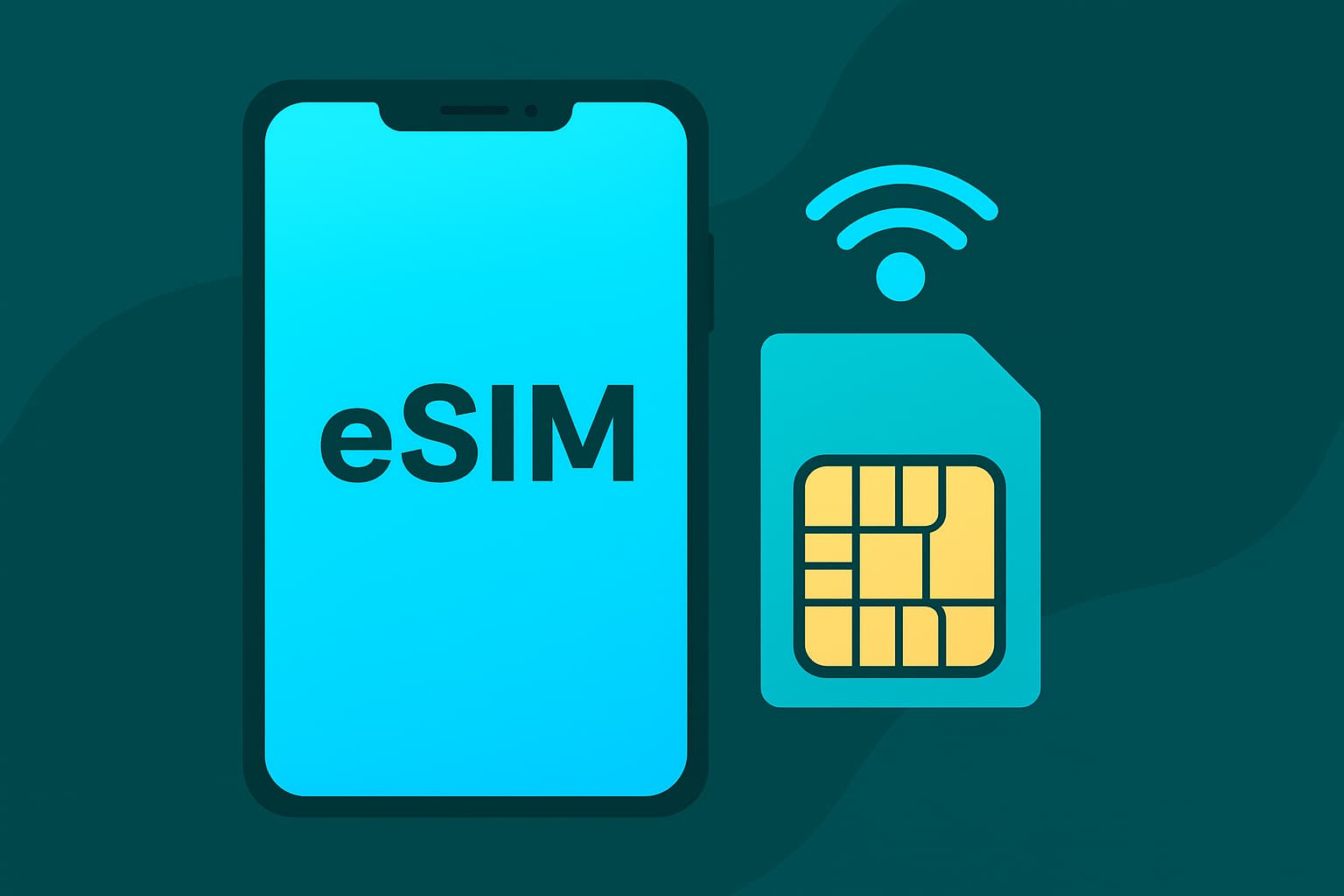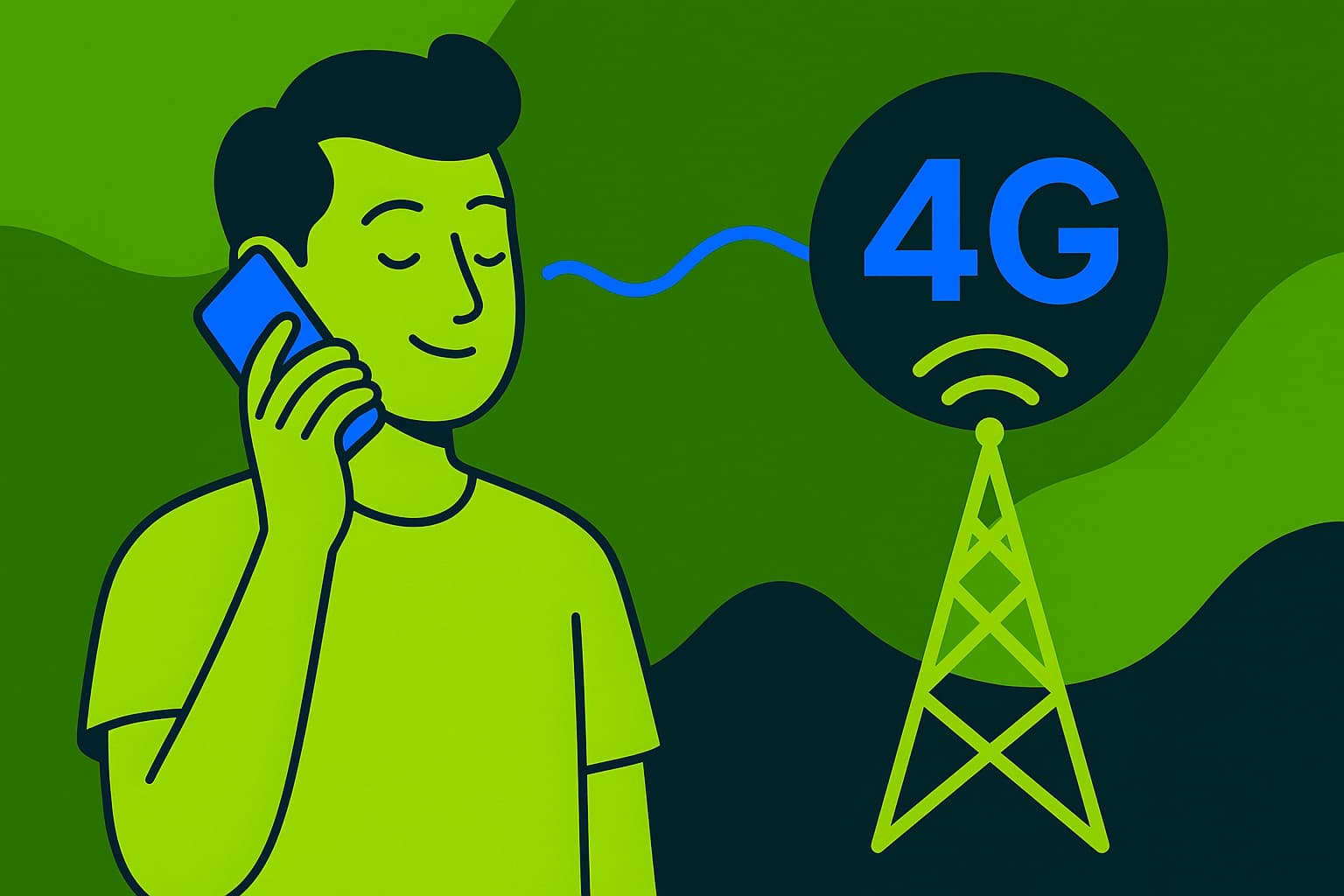Olin > Blog > Fiber vs ADSL: Which Type of Broadband Is Better?
Fiber vs ADSL: Which Type of Broadband Is Better?

Fiber or ADSL? Learn what each broadband type offers, how they differ, and which one is the best fit for your home.
We know how important it is for you to stay connected with a fast, stable, and reliable broadband service. That’s why we want to help you understand the key differences so you can decide between fiber or ADSL—whichever works best for your home.
All the technical terms and features can be confusing, but in this article we’ll break down what fiber and ADSL are and explain the main differences in simple, clear language.
What are ADSL and fiber?
Before diving into their differences, let’s clarify what each one means.
ADSL (Asymmetric Digital Subscriber Line) is a technology that uses traditional copper telephone lines to deliver internet access. It was the most common option for many years and is still in use in many homes.
Fiber, on the other hand, is a newer technology that uses fiber-optic cables made of glass or plastic to transmit data using light pulses. This enables much faster and more stable connections compared to ADSL.
Check our fiber broadband deals
Key Differences Between Fiber and ADSL
Now that you know what each type of broadband is, let’s look at the main differences between them.
Speed
One of the biggest differences between fiber and ADSL is speed. Fiber offers significantly faster download and upload speeds.
For example, with a 300 Mbps fiber connection, you could download an HD movie in under one minute. With a 20 Mbps ADSL connection, that same movie might take 20 minutes or more.
Fiber also offers symmetric speeds, meaning uploads are just as fast as downloads—especially useful for large file transfers or video calls.
Coverage
Another important difference is availability. ADSL is widely available since it relies on the existing phone network, while fiber is still expanding.
At Olin, we’re constantly working to grow our fiber network along the Costa del Sol. But if your area doesn’t yet have access, ADSL can still be a good alternative.
Price
In general, fiber plans tend to be slightly more expensive than ADSL, due to the higher speed and quality of the service.
At Olin, we offer competitive fiber pricing with special deals and discounts for new customers. You can also bundle your fiber with mobile lines and save even more.
Installation
Fiber installation can be a bit more complex than ADSL. It often requires more technical expertise and careful planning to ensure everything works smoothly.
Some homes may need adjustments like installing a fiber wall socket or updating internal wiring to handle the high speeds.
This makes fiber setup more technical compared to ADSL, so it’s essential to rely on trained professionals for the job.
Check our fiber broadband deals
How to Choose Between Fiber and ADSL
Now that you understand the differences, you may be wondering: which one is right for me?
That depends on your needs. If speed and reliability are your top priorities—and fiber is available where you live—it’s clearly the better choice.
But if fiber hasn’t reached your area yet, or you’re looking for a more budget-friendly option, ADSL is still a valid solution.
ADSL or Fiber: What Should You Install at Home?
Here are some use cases to help you decide:
Streaming video and music:
-
ADSL: Fine for standard-definition streaming but may struggle with HD or multiple devices.
-
Fiber: Ideal for households that stream 4K video, even on multiple devices at once.
Online gaming:
-
ADSL: Higher latency can cause lag—frustrating for fast-paced games.
-
Fiber: Low latency ensures smooth, competitive gaming.
Remote work and video calls:
-
ADSL: Sufficient for basic tasks, but calls may freeze if others are online.
-
Fiber: Reliable connection for seamless calls and large file transfers.
Cloud storage and uploads:
-
ADSL: Limited upload speeds make cloud backups slow.
-
Fiber: Symmetric speeds are great for YouTube uploads, cloud editing, and online backups.
Multiple users at home:
-
ADSL: Struggles under heavy use from several people at once.
-
Fiber: Handles multiple devices without a drop in quality—perfect for large families.
When comparing fiber and ADSL for your home broadband, fiber clearly stands out.
Its fast, stable connection makes it perfect for everyday tasks like HD streaming, lag-free gaming, and smooth video calls. Plus, it supports multiple users at once—ideal for modern, connected households.
If fiber is available in your area, it’s a future-proof choice for your home.
Get the Most from Fiber with WiFi Mesh
To make the most of your fiber connection—especially in larger homes—consider our WiFi Cobertura+ service. Based on WiFi Mesh technology, it ensures strong, stable coverage in every room, eliminating dead zones and giving you flawless performance across all your devices.
Still not sure what type of connection you need? Contact the Olin team. We’ll be happy to help you choose the best option.








Very Satisfied
The service is excellent, and we always pay the same amount. We’ve been customers for three years. The staff at the store are very professional and serve us in three different languages!